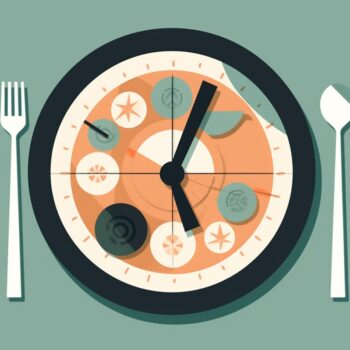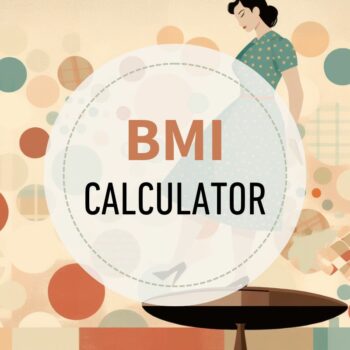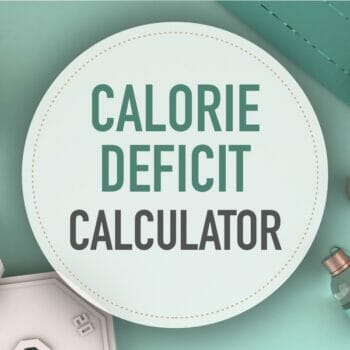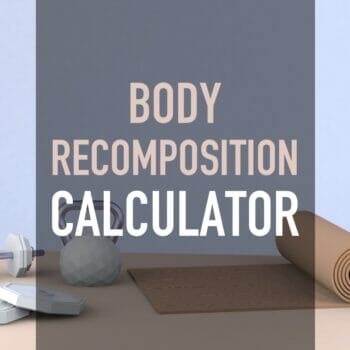Menopause Macro Calculator
If you are in a menopausal season of life, what sort of macros and calories are best? This calculator will recommend a mix of calories, carbs, proteins, and fat amounts to help you achieve your body transformation goals.
What changes after menopause?
Menopause marks a big transition in a woman’s life.
This natural progression brings about physiological changes due to decreased production of hormones such as estrogen and progesterone. These hormonal adjustments can have a wide-ranging impact on health, influencing your metabolic rate, bone density, and body composition.
This shift calls for a tailored strategy in your diet and exercise routine.
Research shows that as muscle declines with age, this affects a woman’s metabolic rate, leading to an increase in fat. The most promising strategy for increasing muscle (and bone mass) is resistance training, as well as sufficient amounts of protein, vitamin D, and calcium.
What are ideal macros for women post-menopause?
- Slightly increased protein, along with a consistent strength-emphasized exercise program, are the best ways to combat age-related muscle loss.
- Fats are not the enemy but are essential for hormone production and absorption of fat-soluble vitamins.
- Carbs provide the energy for exercise and daily activities. There is no need to restrict or eliminate them, but refined or simple carbs should be limited.
The calculator above will create the best mix of macros based on research and what has worked with the hundreds of post-menopausal women I have coached.
This is typically around 35% protein, 30-35% carb, and 30-35% fat, but varies depending on the individual.
What about macros during perimenopause?
During this transitional time prior to menopause, hormone levels will shift. The suggested macros in the calculator above will still apply.
How many calories should a postmenopausal woman eat?
Menopause is associated with accelerated muscle loss decreasing energy expenditure during rest and physical activity.
Therefore, daily calorie intake will be lower than for a younger woman.
Generally, a woman aged 50-60, of average height, needs around 1,550 to 1,650 calories daily.
This varies depending on specific age, height, and activity level – use the calculator to get the best estimate.
As calorie intake reduces with age, it’s helpful to incorporate a variety of foods with a spectrum of nutrients to support bone density and heart health, which are particularly important during post-menopause.
What exercises should I be doing?
Staying active after menopause is not just beneficial; I would argue it’s essential.
Resistance training
Strength training is vital due to the natural decline in muscle mass and bone density post-menopause. Lifting weights, using resistance bands, or practicing body-weight exercises can help maintain muscle mass, improve metabolism, and strengthen bones.
Engaging in strength training exercises at least twice a week can provide these benefits.
What about cardio?
Since cardiovascular health is also important as women age, this exercise shouldn’t be ignored.
However, avoid high-impact exercises like running and high-impact aerobic routines. Joint-friendly activities like rowing, biking, walking, and stair climbing are better.
Flexibility and balance
Flexibility and balance exercises are often overlooked but are particularly important to reduce the risk of falls and improve overall mobility. Yoga, Pilates, and tai chi can increase flexibility, enhance balance, and promote relaxation.
Blue Zones research looked at the oldest living populations on the planet and found these people all had this in common:
- Engaging in functional exercises like gardening, squatting, walking up hills, and housework.
Low-impact exercise that engages skeletal muscles and the heart muscle are the best!
What’s the best plan to lose weight and improve your condition after menopause?
Managing weight after menopause can be a unique challenge due to hormonal changes that may result in a slower metabolism and alterations in body composition.
There’s often weight gain – particularly around the abdomen. These changes are a normal part of aging.
I’ve worked with hundreds of women in their 50s and older who have improved their physique and well-being.
The macro-based method successfully achieves body transformation while building a positive attitude toward food and self-esteem.
Working together, we develop a helpful dietary plan and exercise routine that will suit you no matter where you are. A macros approach avoids all dietary fads and food restrictions while giving you a clear plan you can follow with confidence.
Find out more about my coaching program.
View article sourcesSources
- Ko, H., & Jung, Y. (2021). Energy Metabolism Changes and Dysregulated Lipid Metabolism in Postmenopausal Women. Nutrients, 13(12). https://doi.org/10.3390/nu13124556
- Colpani, V., Oppermann, K., & Spritzer, P. M. (2013). Association between habitual physical activity and lower cardiovascular risk in premenopausal, perimenopausal, and postmenopausal women: a population-based study. Menopause (New York, N.Y.), 20(5), 525–531. https://doi.org/10.1097/GME.0b013e318271b388
4 Comments


 Menopause Macro Calculator
Menopause Macro Calculator Intermittent Fasting Calculator
Intermittent Fasting Calculator BMI Calculator
BMI Calculator Calorie Deficit Calculator
Calorie Deficit Calculator Body Recomposition Calculator
Body Recomposition Calculator
I cannot get the calculator to work.
Hi Dee, I checked it on Mobile and desktop and I’m not seeing any issues. Can you be more specific as to the trouble you are having? Thanks -Coach Ted
Hi Ted, thank you so much for this information.
You’re welcome and so nice to hear from you. Email me an update. 🙂